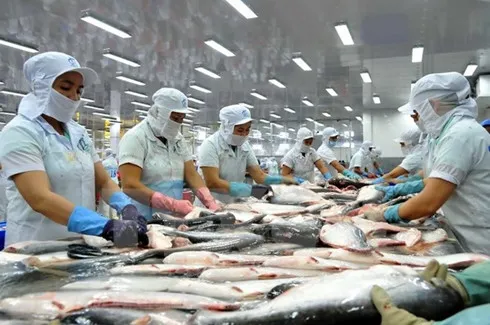Catfish exports now face tougher US inspections

The USDA’s Food Safety and Inspection Service (FSIS) is now in an 18-month transition period, with full enforcement of inspections of Siluriformes species scheduled for September 1, 2017.
The Siluriformes species of catfish includes all the popular Vietnamese families of catfish commonly exported to the US such as tra, basa, swai and pangasius among others.
In Vietnam, 60 plants have been cleared to export the Siluriformes species of catfish to the US. These plants have submitted documentation to FSIS showing that they have the laws or legal measures in place to regulate the rearing and processing of catfish for human consumption.
In addition, these plants have represented they will ensure compliance with the US Food and Drug Administration (FDA) regulations of fish and fish products.
By the end of the transition period, these processors will have to demonstrate to the satisfaction of FSIS that their catfish inspection systems are in place and operating effectively on a basis equivalent to those in the US.
If these plants were to fail to make the showing, they would be completely barred from exporting catfish to the US market.
While Vietnam is the largest source of foreign catfish to the US, it is far from being the only one. Bangladesh has 30 plants authorized to export catfish to the US., China has 19, Guyana 20, and Pakistan has nine.
Since this past April 15, imported Siluriformes fish and fish product shipments to the US have been selected for inspection and subjected to species and residue testing on at least a quarterly basis.
Shipments are under scrutiny for such contaminants as pesticides, chemicals, and dyes.
Both foreign and domestic catfish have come in for the new attention. Vietnam has seen a number of shipments detained, and last July, Wisner, LA-based Haring Catfish Inc. opted to recall 21, 521 pounds of catfish after FSIS discovered it contained gentian (crystal) residue.
Gentian crystal violet is a chemical dye used in some medicine. A mix of products, including catfish tails, steaks, filets, whole fish, strips, and nuggets were involved in that recall.
Siluriformes regulation is a way of casting a broad net over all North American and Asian catfish species. An estimated 1,300 US domestic catfish farms and about 23 US slaughtering and processing facilities handle the Ictaluridae family of catfish (of the order Siluriformes).
The Catfish Farmers of America, representing the domestic catfish industry, have been the leading advocates of the new USDA catfish inspection program.
They say they’ve lost market share because the previous inspection scheme run by FDA resulted in less than 2% of foreign catfish getting inspected, making it easy to slip adulterated foreign-raised catfish into the US market.
Imported catfish now account for about two-thirds of the US market.
The US Senate has voted to scrap the new FSIS inspection program altogether on the grounds it is duplicative, wasteful and unnecessary.
However, the Senate bill would still need the approval of the US House of Representatives and President Barack Obama’s signature to become law, a proposition that though possible, appears unlikely to happen.





